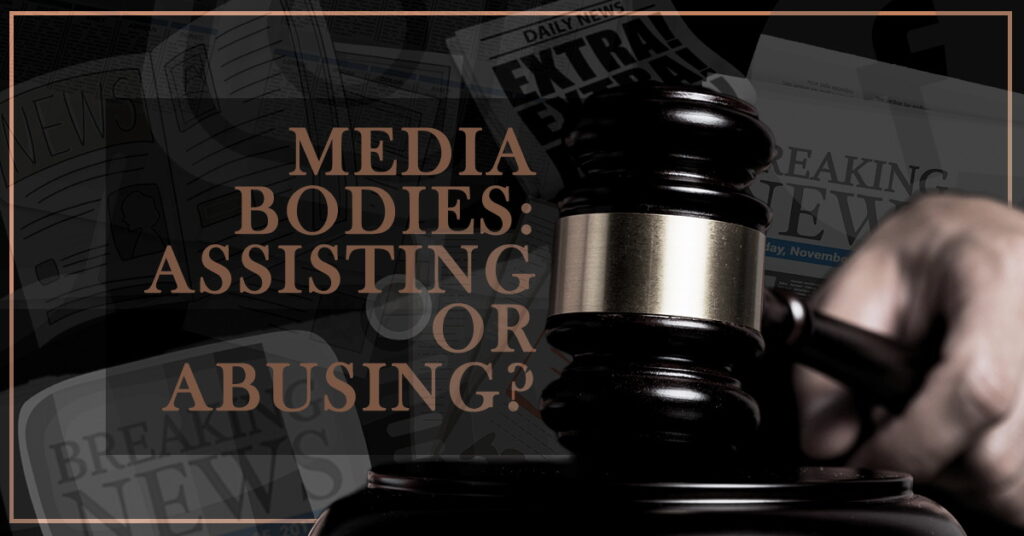
“The media’s the most powerful entity on earth. They have the power to make the innocent guilty and to make the guilty innocent, and that’s power. Because they control the minds of the masses.”
― Malcolm X
Through the years, journalism and media have undergone a metamorphosis of sorts with new branches and methods of dissipation of information in use. Yet journalism is still considered the bedrock of democracy, with its primary purpose being to serve “all the citizens.” Therefore it is imperative that journalists tell the truth because society makes decisions and forms opinions based on what they see and hear in the media.
Sometimes it is easier for mainstream media to uncover facts and access information than law enforcement agencies. It is up to them to use this power to better society, to inform people, and to help create a generation of people who are tolerant of opposing views.
The Rodney King Assault Case
On March 3, 1991, Rodney King was involved in a high-speed chase with the police for drunk driving. When Los Angeles police officers caught up to him, they struck him fifty-three to fifty-six times with batons as well as jolted him with a fifty-thousand-volt stun gun.
Video footage of the incident was captured by a private citizen and shared with a local news station. The video showed King unarmed and being brutally beaten by the police. There was an immense public outcry, and the police sheriff announced that fourteen officers involved would be disciplined, and three others would face criminal charges. No charges were filed against King.

When the case went to trial, four officers were tried for the use of excessive force. Of these, three were acquitted, and the jury failed to reach a verdict for the fourth officer. The ruling caused riots to erupt in Los Angeles in 1992, the United States Army and Marine Corps had to be called into re-establish control. Sixty-three people were killed and more than two-thousand injured.
The federal government was pressured by all the media coverage the case had garnered to prosecute a separate civil rights case against the four officers. The trial ended in 1993, with two officers being found guilty and sentenced to prison time. In a separate lawsuit, the city of Los Angeles was found liable to King for damages worth $3.8 million.
The Jessica Lal Case
On the night of April 29th, 1999, local actress and model Jessica Lal worked as a celebrity bartender at the Tamarind Court restaurant in Mehrauli, Delhi. Manu Sharma, the 24-year-old son of Venod Sharma, who was a Congress Party minister at the time, got into a heated argument with Lal, and when she refused Sharma’s advances, he pulled out his gun and fired, hitting Lal on her temple. She died at the hospital.
When the case went to trial in 1999, four of the main witnesses turned hostile, and numerous other witnesses denied their presence at the restaurant. Shayan Munshi, the primary witness in the trial, claimed that he signed a statement written in Hindi, which he did not understand. After an extensive trial, all suspects were acquitted by a lower court in 2006.
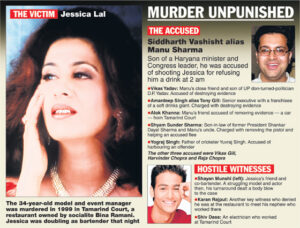
There was a public outcry after the ruling. A magazine Tehelka organised an undercover operation to uncover the accusations of bribery and corruption against Sharma’s father. This was followed by Star News and NDTV interviewing Shayan Munshi, who thought it was an audition for a movie. It was discovered that he could speak, read, and understand Hindi. Based on the evidence and the bullet recovered from Lal, Manu Sharma was found guilty in December of 2006.
Media bodies have successfully ensured that justice is granted where the judicial system fails to do so. However, one question remains—while these entities are supposed to act as watchdogs and unravel the strings of misconduct, which level are they allowed to go to before it becomes a mockery of law? Investigative journalism may be right in its own accord, but few traces remain of what it once stood for. Nowadays, the media is swiftly trudging down a path of lies and misgivings to increase viewership, leading to commercial gains. Rather than unbiased reporting of facts, news anchors resort to the act of sensationalising pieces of information for personal benefit.
The Fake Sting on Uma Khurana
For instance, in 2007, Sudhir Chaudhary—CEO and editor of Live India—broadcast a fake sting operation against Uma Khurana. A Mathematics instructor at Sarvodaya Kanya Vidyalaya (a Delhi Government school), she was accused of forcing students into prostitution. A reporter posing as a student had made allegations against the teacher, which were broadcasted on live television. Following this, the public had erupted with outrage. The parents of school-going children were naturally shocked and furious, worried for their kids. But the 41-year-old woman was also a victim of a brutal mob attack—where she was stripped naked and beaten up. The police then arrested her, and she was terminated from her service by the Delhi Government. After due investigation, she was found completely innocent. Sudhir Chaudhary claimed he wasn’t privy to the purported sting and blamed a reporter for keeping him in the dark and running the entire operation. She had filed a defamation case against Sudhir Chaudhary for the humiliation, mental agony, and harassment caused, which she later withdrew in 2008 after reaching a ‘settlement.’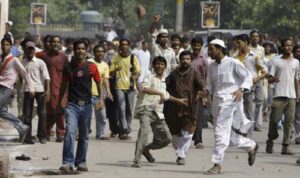
Apart from this, the media plays a massive role in the proceedings of a court hearing as well. The press takes matters into its own hands to declare the verdict even before the trial takes place. A person charged with a crime is already considered guilty before the proper investigation by the police. Heavily influencing public opinion, the media may create a lot of needless trouble, at times, for the people it chooses to target. It can also put undue pressure on the judge to reach a decision that is in accordance with public thought.
The Sushant Singh Rajput Case
On June 14, the country was shocked by the news of Sushant Singh Rajput dying by suicide. The same week, several conspiracies emerged, which delved into uncovering the truth, but they all had one thing in common—all of them targeted Rhea Chakraborty, actor, and partner of Sushant. The focus had shifted entirely from mental health to the ill-effects of nepotism and, ultimately, to the alleged involvement of Chakraborty in the suicide.
She has been portrayed as the villain based on purely speculative stances. Hounded by media personnel, cameras and microphones have been shoved into her face whenever she stepped out of her house. TV channels reported her every move and caught her in a web of gossip and despicable insinuations. Without any evidence against her, some anchors have taken it upon themselves to prove her guilty of abetting Sushant’s suicide. Her private chats with her friends have been circulated and broadcasted on national television. Described as a controlling and manipulative girlfriend, she has been accused of being involved in money laundering, of being part of a drug cartel, of having kept Sushant away from his family, and even of attempting to poison him. Headlines like “Sushant par Rhea ka kaala jaadu” (Rhea’s black magic on Sushant) flashed across millions of screens on primetime news programs.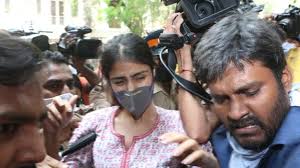
Social media trolls have also followed in the footsteps of mainstream news channels. Chakraborty has received a lot of online hate—accusations of murder as well as rape-murder threats. Facing a large amount of harassment, she eventually filed an FIR against two such Instagram accounts and requested the help of the Cyber Crime Unit.
Although the CBI is currently investigating this case, media entities have already created a deep-rooted image in the minds of the public and continue to do so. The decision of whether the accused is guilty of the charges should lie only in the hands of the investigative and judicial bodies. The journalists, assuming that role to report scandalous details on baseless speculation, are then indeed practising their power through unethical means.
We live in a world where a single misinformed tweet or a soundbite taken out of context could tarnish someone’s reputation. Journalists and media personnel hold tremendous power and influence. The issues around which they build their news cycle ultimately become points of discussion and deliberation in the lives of the majority of their viewers. They can initiate a debate on issues that directly affect the lives of thousands of citizens, issues that people in the government and elected bodies may not otherwise discuss. Therefore journalists must be held to a higher standard.
Written by Cynthia Maria Dsouza and Tulika Somani for MTTN
Edited by Radhika Taneja for MTTN
Featured Image by Arvin Das for MTTN
Image sources: freepik.com, inquirer.com, indianjournalismreview.com, reuters.com, and indiatoday.in
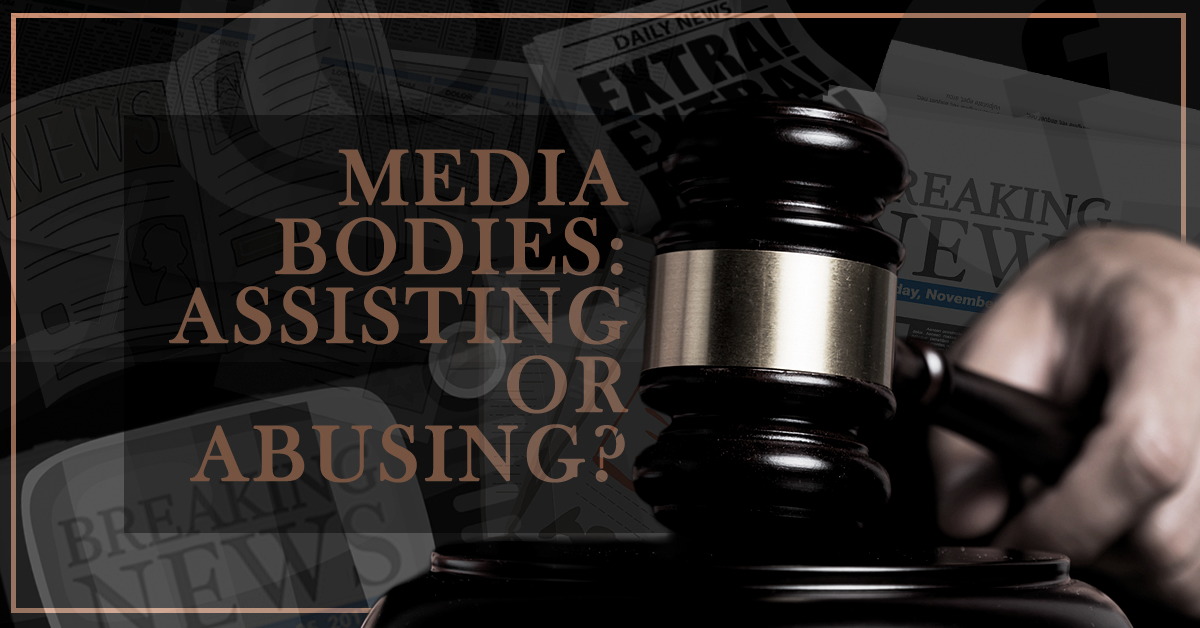
Leave a Reply
You must be logged in to post a comment.